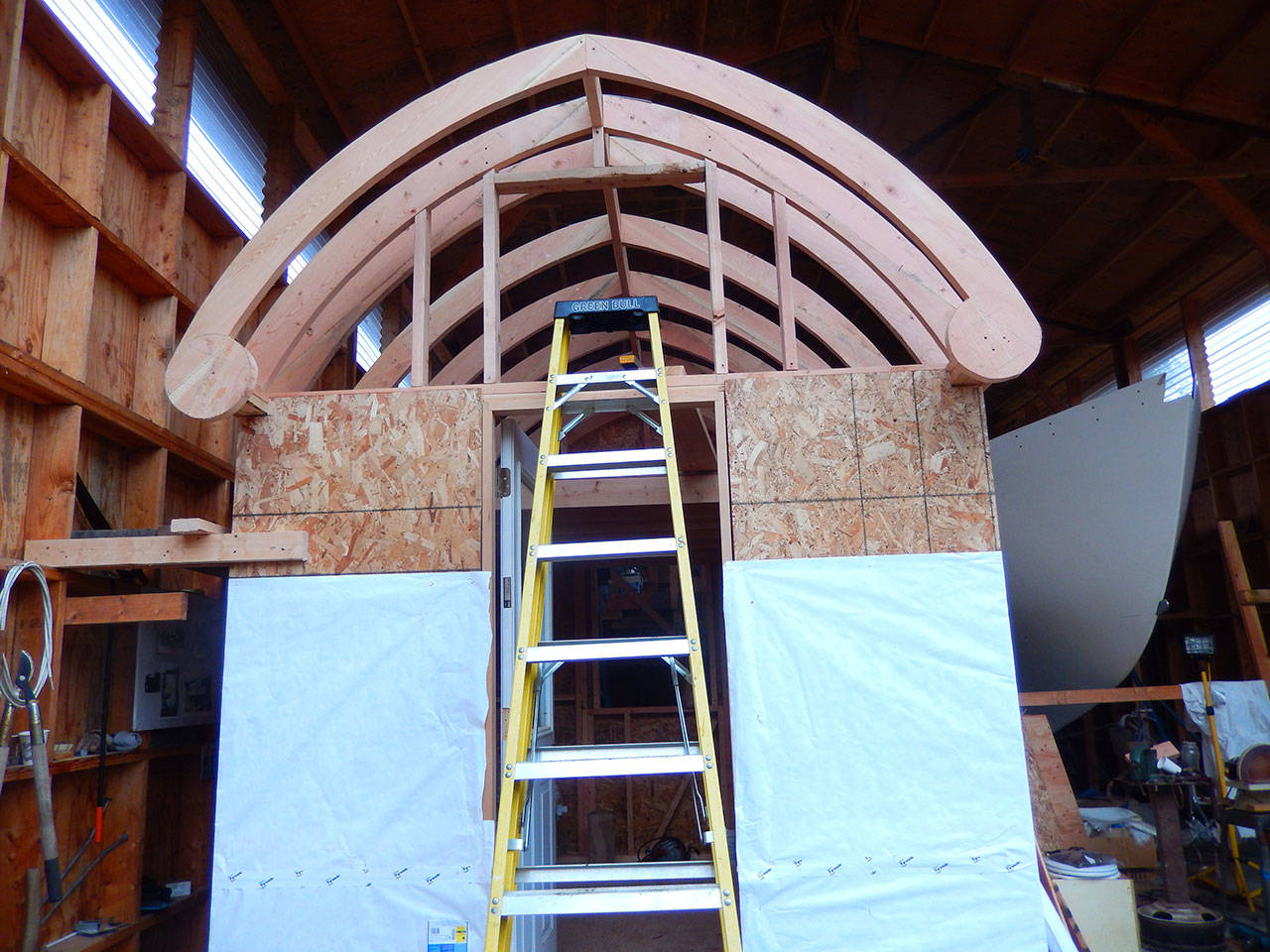Some residents across the North Olympic Peninsula are considering downsizing their homes as the tiny house market slowly makes its way here.
For those unfamiliar, tiny houses are a movement where individuals or even families choose to live in a custom home typically 200-1,000 square feet. They can be mobile or permanent.
The concept has been put in the mainstream with television shows and growing media coverage.
Jefferson County and Olympia currently are the closest efforts to develop tiny houses as affordable housing and/or as extensions of homeless tent camps.
But in the Sequim area, city and county officials say there’s only been interest as of late and no action.
Sequim’s Assistant City Manager Joe Irvin said city staff have received several inquiries about zoning regulations related to tiny houses and accessory dwelling units, small homes behind existing homes, but no development proposals have been made yet.
“I think it is good for communities to offer a range of housing types, therefore giving our residents a choice,” Irvin said. “If the market exists for tiny houses, I’m sure someone will try to meet the demand.”
Irvin said permanent tiny houses are allowed in the R4-R8 zoning district, which is throughout the City of Sequim in residential neighborhoods. However, mobile RV type tiny homes on wheels are allowed in RV parks, similar to travel trailers.
Mary Ellen Winborn, Clallam County director of community development, said interest in tiny houses is there and planners treat it similarly to an RV when zoning it.
She said staff plan to discuss the concept for possible changes in the next six months with the county’s permit advisory board.
“We’re more focused on safety and certification,” she said. “Nobody is stopping any (type of development).”
To build a tiny house within the city limits, Irvin said the basic requirements include being in compliance with the International Building Code and connection to city utility services.
State law mandates tiny houses must be hooked up to a permanent septic or sewer hook-up and have a permanent water source similar to park model homes. The homes also must have at least one habitable room, a ceiling at least 7 feet high and an egress door with a single hinge providing a clear width of 32 inches.
Jeffco’s tiny houses
Zoning for tiny houses already is underway in Jefferson County.
In 2015, The Port Townsend Leader reported the Port Townsend Affordable Housing Action Group built a tiny house in the hopes of building future tiny house developments in Jefferson County. The idea was for a cost-effective model of a 250-square-foot house with an estimated cost of $5,000-$6,000 to build each unit.
Barbara Morey, a housing advocate for the affordable housing group, said the organization started developing tiny houses as a solution to the housing crisis in Jefferson County.
She said her group reviewed several studies in areas of the United States that concluded villages of tiny houses of less than 250 square feet were an effective model for providing subsidized, supportive housing and a tool to address both homelessness and the lack of affordable housing.
Morey said the City of Port Townsend has permitted the building of three tiny houses on property in the Eco Village, which provides new low-income, affordable housing units in an intentional community in Port Townsend.
Potential tiny house owners are being interviewed, she said.
Tiny house owners may build or bring their homes to the sites, which cost $300 per month including utilities.
Some social service representatives say tiny houses could help combat homelessness.
Homelessness in Clallam County is rising in recent years, according to the Point in Time (PIT) count. The total of homeless individuals increased by 117 persons from 2015-2016, including both sheltered and unsheltered individuals. The number of unsheltered individuals alone also increased from 41 to 105 from 2015-2016.
During a panel discussion on homelessness in February, Kathy Morgan of OlyCAP said tiny houses “would only be one solution” to house homeless individuals, “but it has worked in big ways in different communities that have established tiny home communities.”
Kevin Harkins of Serenity House said tiny houses may only work for certain individuals, such as veterans and people who have social issues.
While staff for these entities don’t have a plan in place for tiny houses, Morgan said Quixote Village in Olympia is a good example of tiny houses used to help those in need.
Once a homeless tent camp, Quixote Village consists of 30 tiny house cottages and a community center.
Community Framework, a charitable nonprofit organization that supports and develops affordable housing in vital communities, conducted a study on the village in 2015 arguing that tiny houses can be effective in combating homelessness.
The study states most of the residents in this village meet the Department of Housing and Urban Development’s definition of chronic homelessness.
The 30 cottages are 144 square feet and include half a bathroom plus a closet, with a front porch and garden area. The village also has a community building with a kitchen, bathing facilities, recreational and social service space.
Community Framework’s study states most of the capital funding for a tiny house village would need to be in the form of grants instead of loans because the project would not generate enough rental income to support debt service.
As for proposed tiny houses in Port Townsend, officials with the City of Port Townsend report work continues and no building permits have been submitted for tiny houses as of March 7.
Matthew Nash contributed to this report.
Reach Erin Hawkins at ehawkins@sequimgazette.com.



